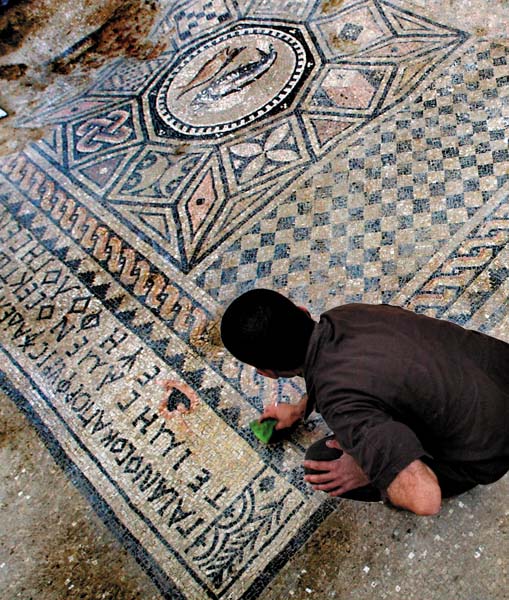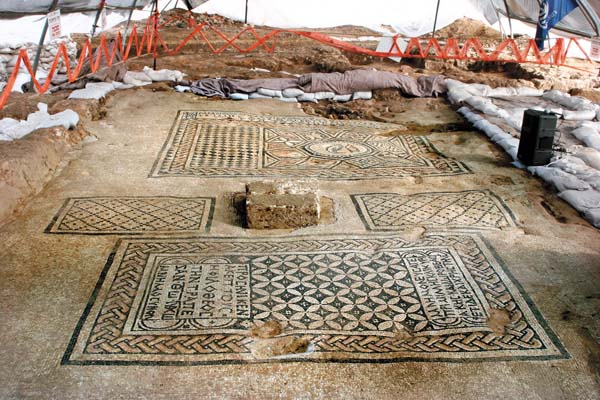A Floor for the Lord
Sidebar to: Inscribed “To God Jesus Christ”


Pious artwork from the hands of an artist named Brutius graces the floor of the Christian prayer hall at Megiddo. Four mosaic panels—one on each side of what must have been a Eucharist table—are bordered with black and white tesserae and decorated with rosettes, rhombuses (parallelograms), geometric shapes (tessellations) and frames with a guilloche pattern.
The southern panel, adorned with a carpet of rosettes, has two inscriptions. The northern panel also has an inscription and has an octagon surrounded by geometric shapes, including a meander (labyrinth), stars, a shield, a checkerboard, flowers and a three-dimensional prism, which encloses a medallion picturing a bass and a tuna—a clear visual reference to Jesus.
In the middle of the floor, under the center of a proposed arch, are two rectangular stones that most likely were the feet of the Eucharist table, or trapeza.
The inscriptions are in Greek and date to the third century based on their paleographic characteristics. The inscription at the top of the northern panel is dedicated to Gaianus, the centurion who paid for the floor to be paved with mosaics. It reads, “Gaianus, also called Porphyrius, centurion, our brother, has made the pavement at his own expense as an act of liberality. Brutius has carried out the work.”
Already a library member? Log in here.
Institution user? Log in with your IP address.

